cuisine & empire
Harvard Graduate School of Design
Empire, IL
Prof. Rosalea Monacella
Thesis, 2024
On the American Farm, Empire reigns. A power structure that encompasses an ahistorical spatial totality, it creates the conditions for the control of human life and nature. Empire is also a place. It is located in McLean County, Illinois, the top producer of corn in the United States. This corn, no. 2 yellow dent, drives our cuisine, yet we eat almost none of it. Cuisine & Empire intersect in the farm as a problem of land. Cuisine & Empire: A Framework for Multi-Species Care on the American Farm re-grounds landscape architecture in agrarian practices. By reconceiving the land ordinance, it counters the scalable practices of Empire that reduce multi-species life to yields and quotas. Using non-scalable farm ecologies, infrastructures, economies, and land practices, Cuisine & Empire re-assembles food cultivation and culture.
Course 1: Multi-Faceted Narratives
Multi-faceted Narratives challenges the dominance of empire by unearthing buried histories and past ecologies on the site. Media such as films and albums tell imperial and alternative histories, using archival material from the McLean County Museum of History.
Course 2: Species in Situ
Species in Situ is a close observation of current conditions, species, and lifeways, rooted in the previous historic analysis. Five farm typologies, designed spaces, reveal the techniques, technologies, actors, and processes that have shaped the modern American farm.
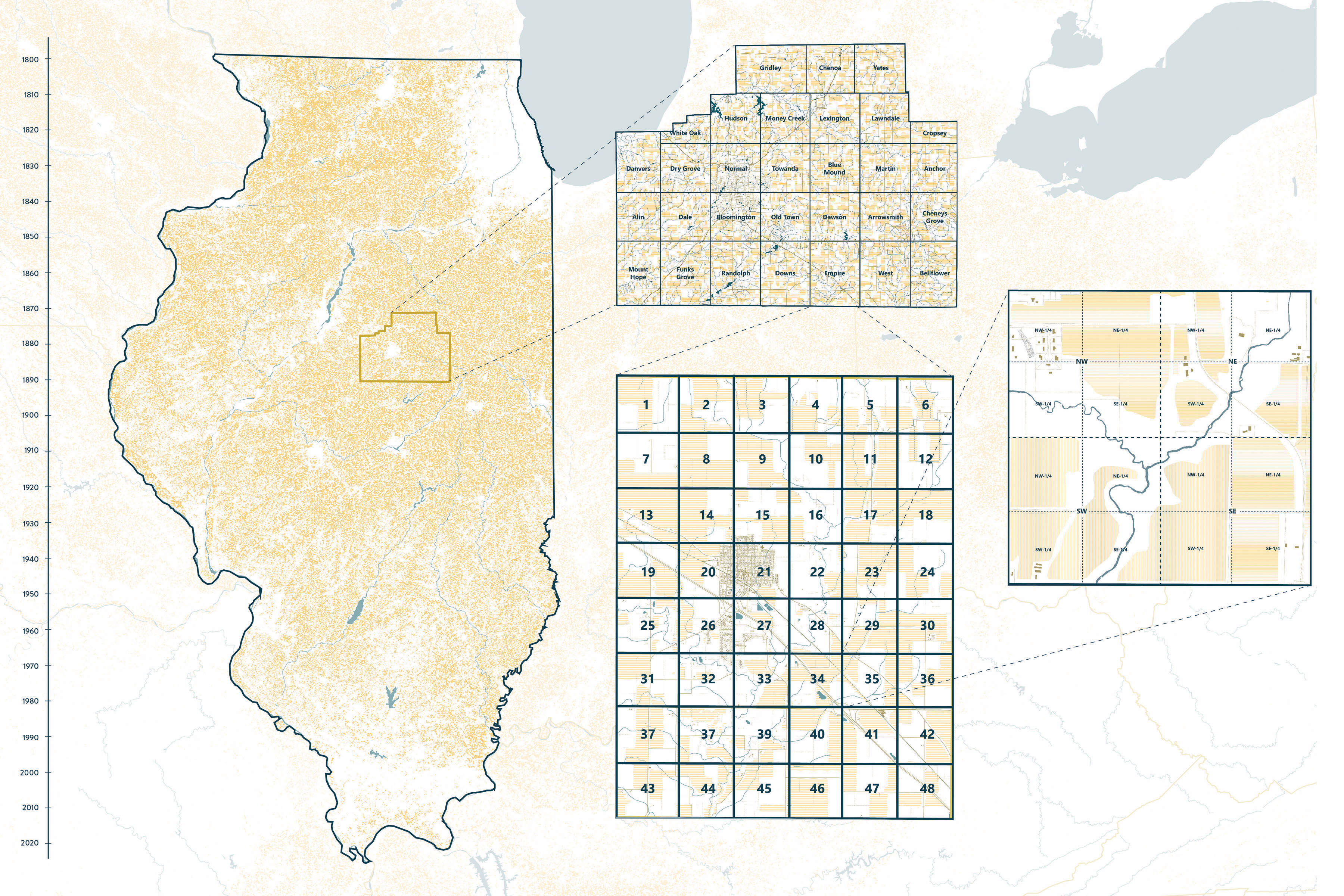

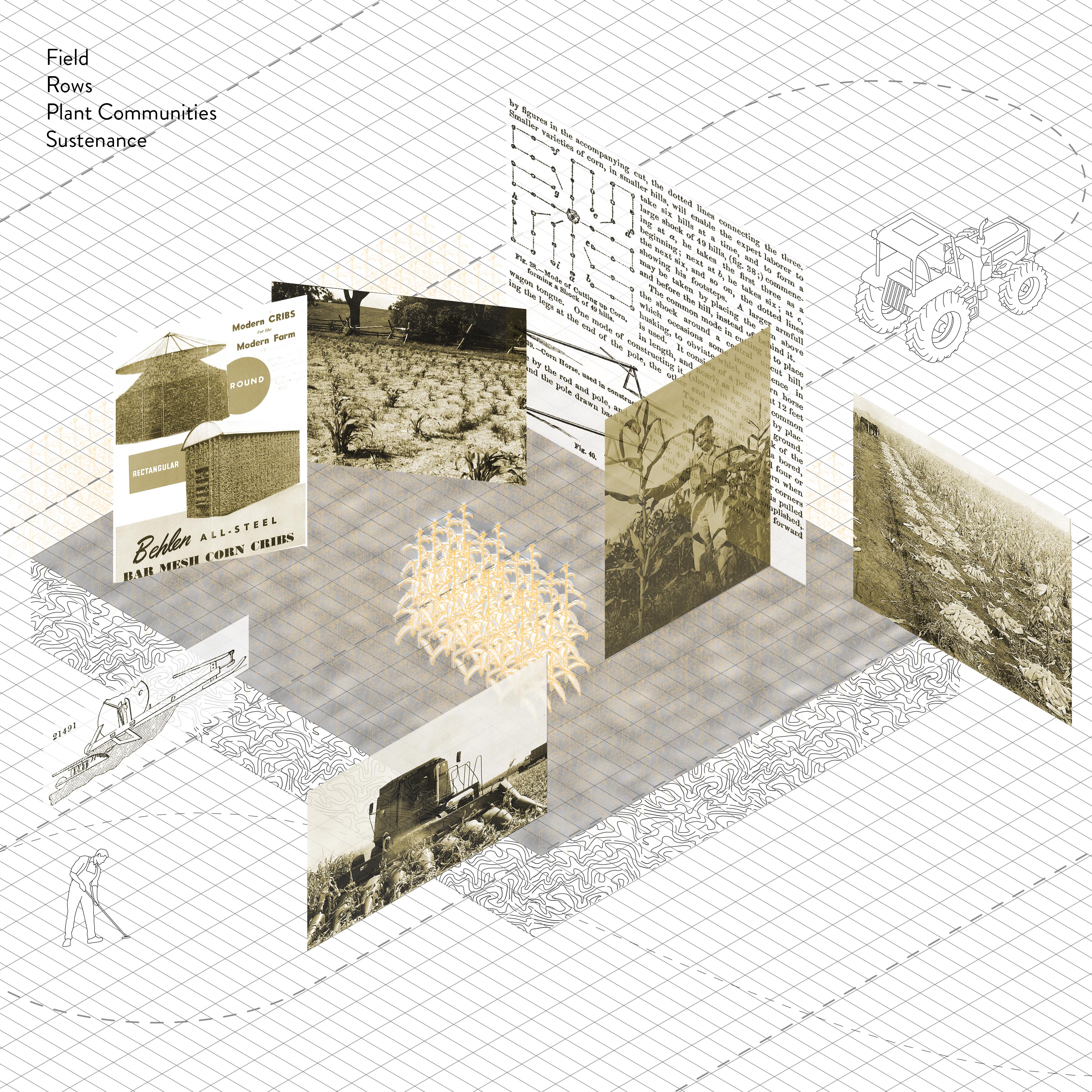
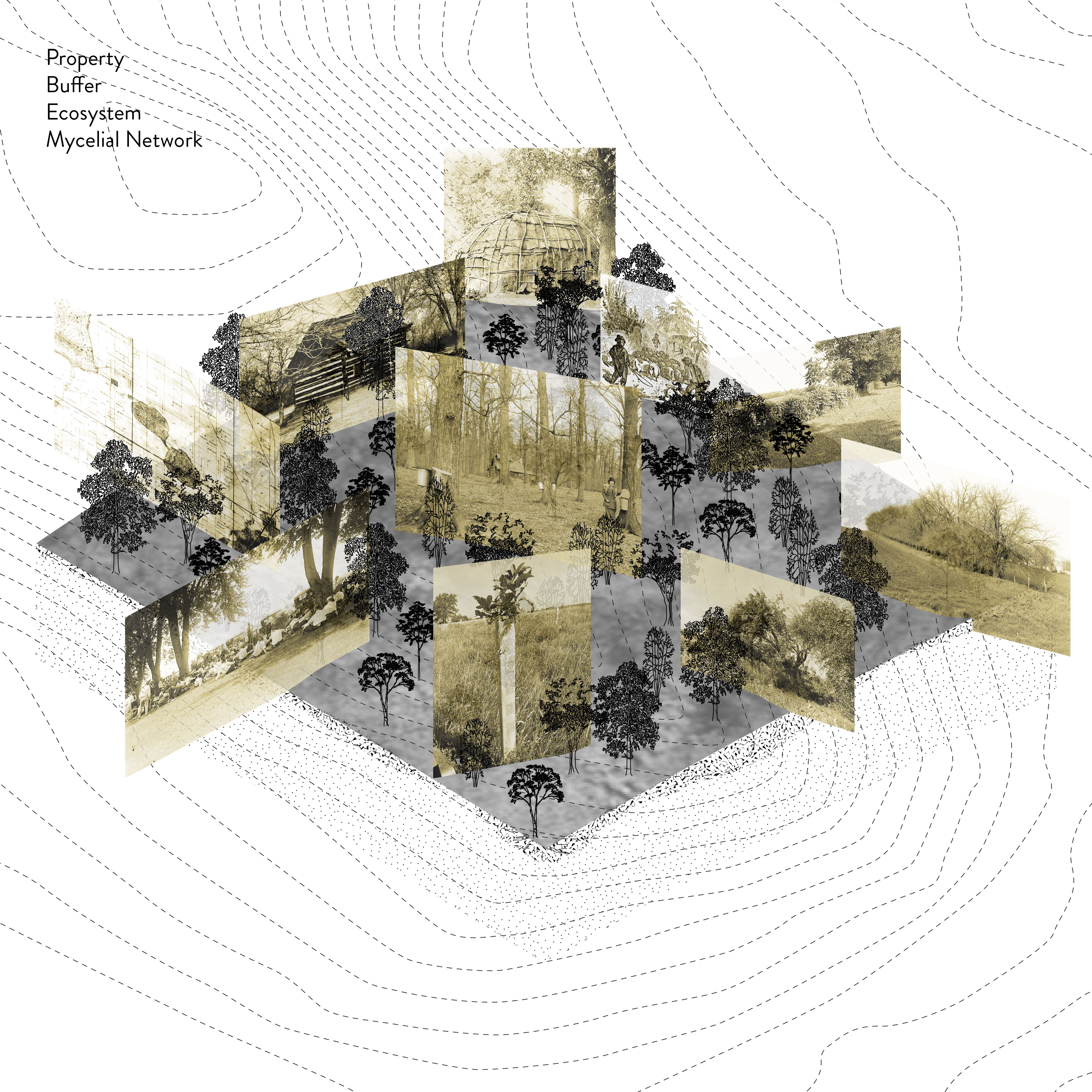





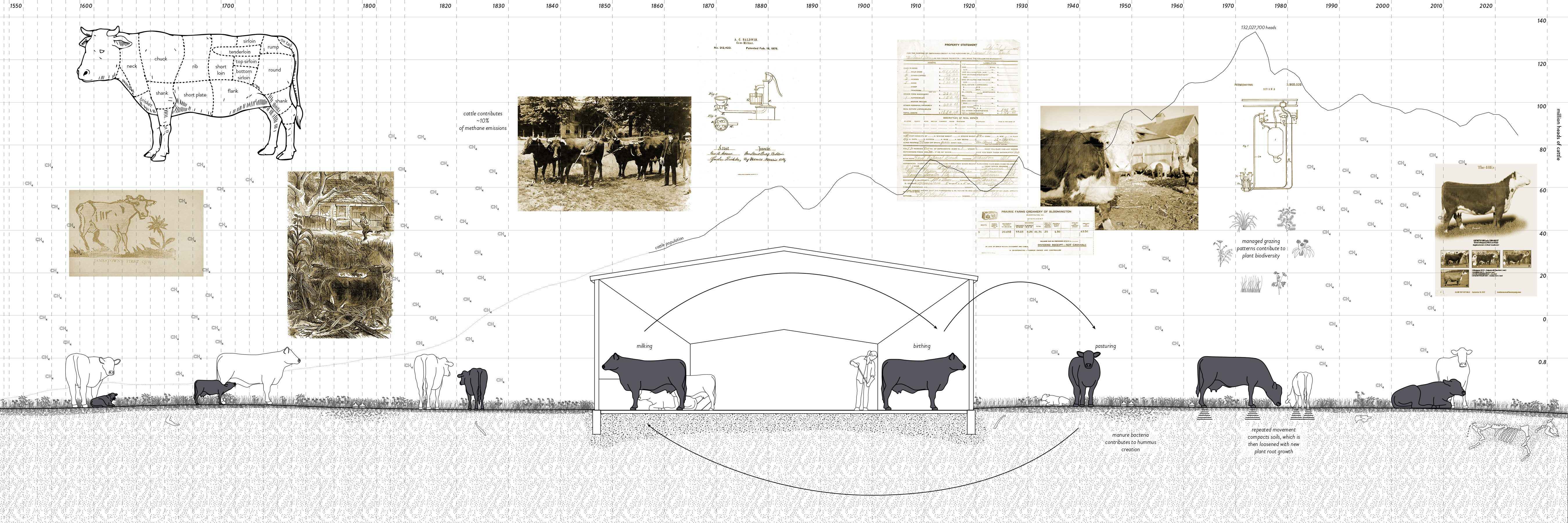

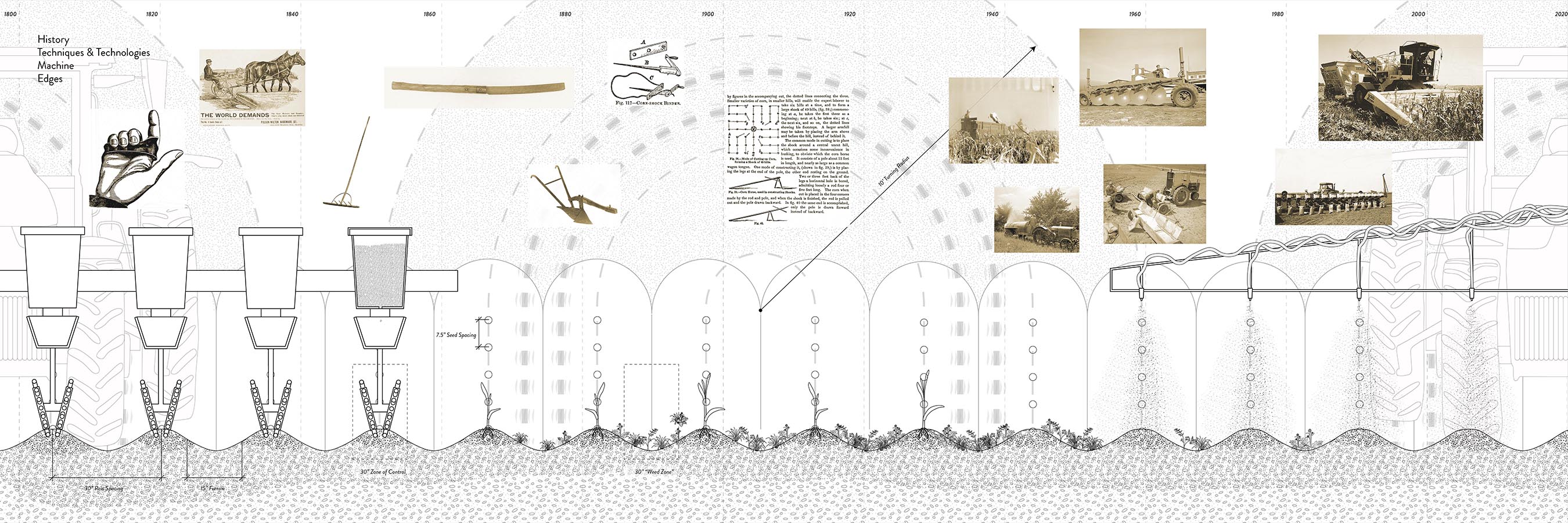
Course 3: Respect & Recourse
Respect & Recourse, the main course, builds upon the previous courses, proposing designs for non-extractive cultivation. Beginning at the scale of the plant, the farm is reshaped through relational infrastructures, techniques, and spaces for celebratory sharing. Recourses include The Field Plot, The Compost Corridor, and The Shared Silo.
.
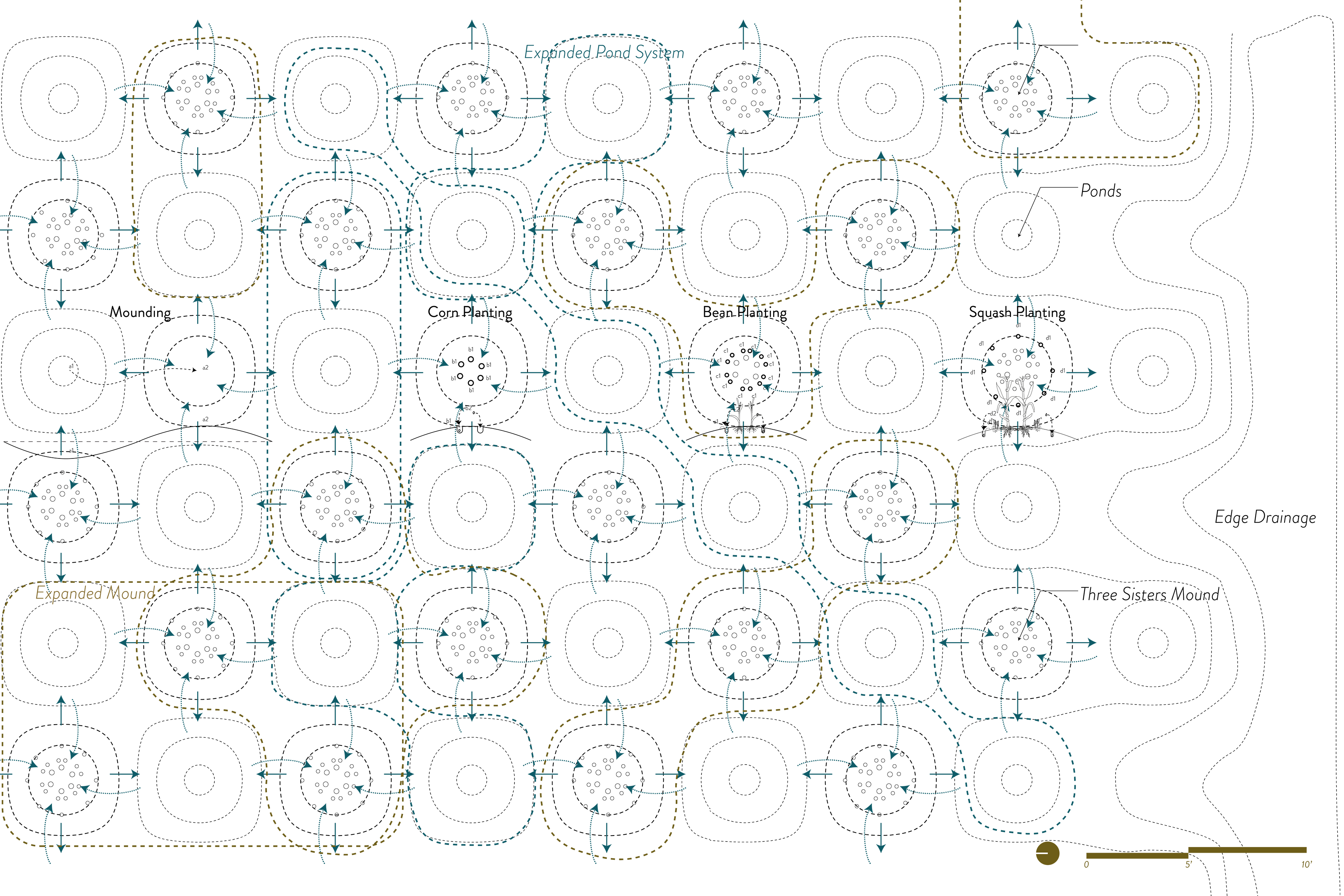
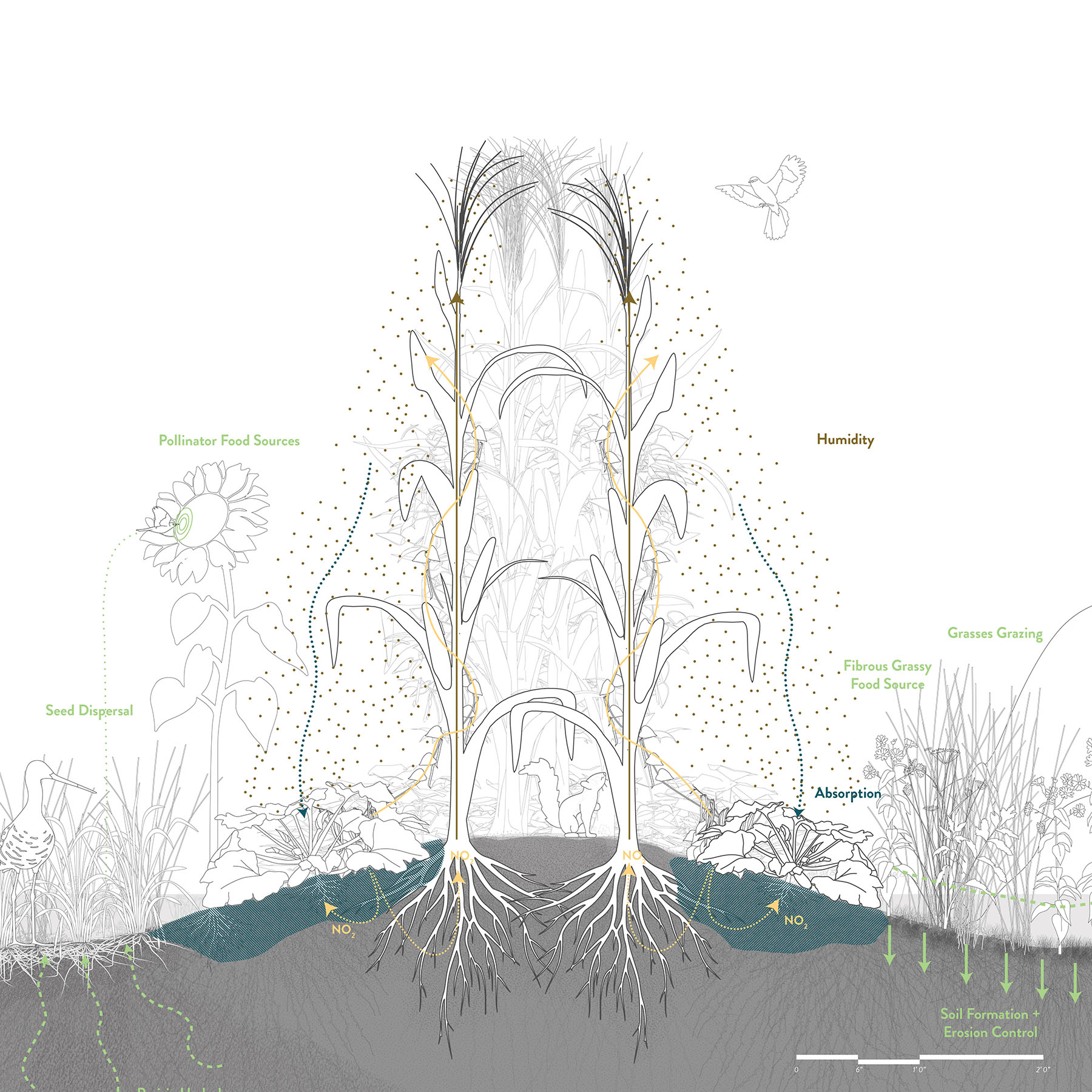
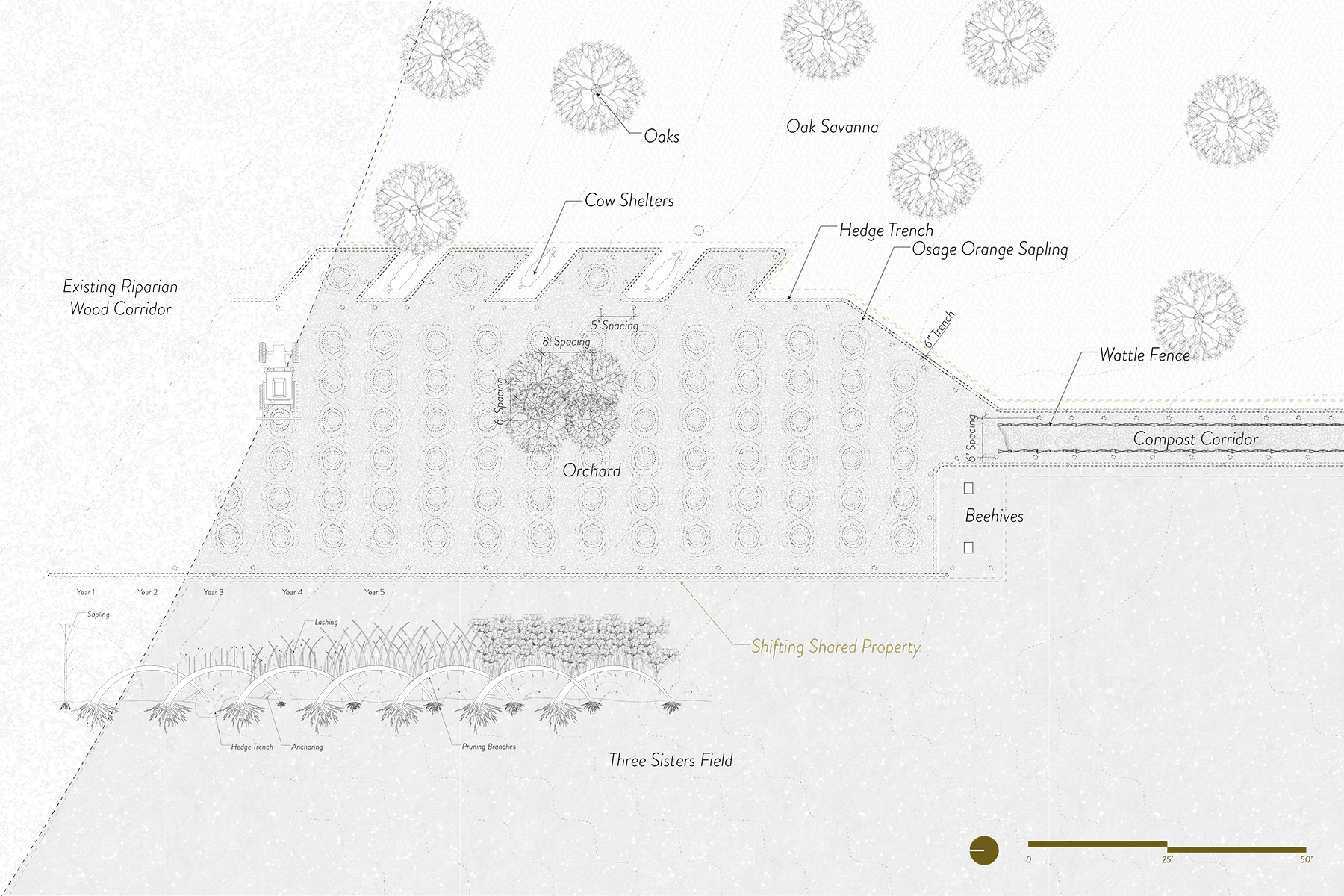
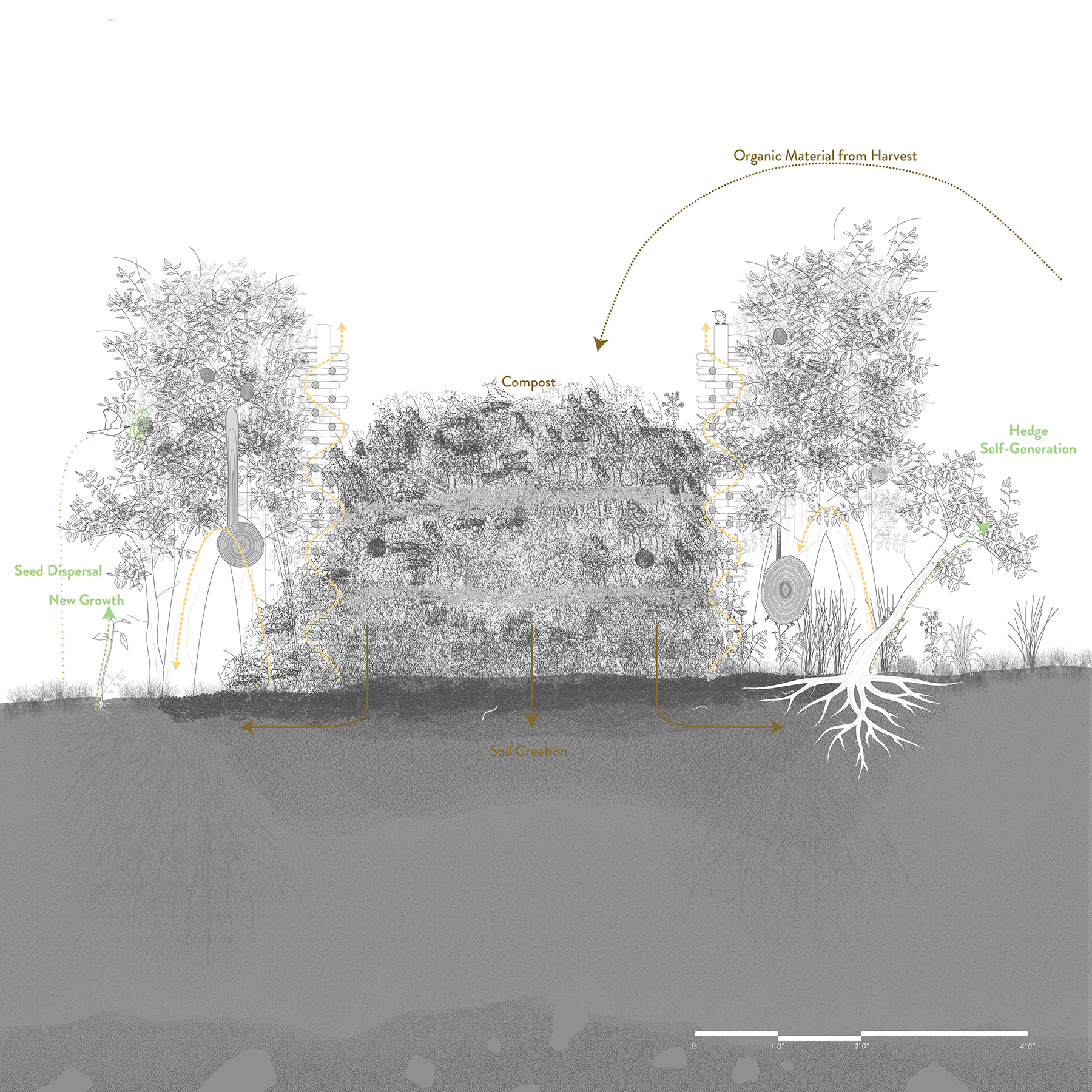
Rather than dividing, the Compost Corridor is an expanded hedge that composts agricultural waste into a resource - rich, local soil - shared by neighbors. It’s form weaves together shared spaces for multiple forms of life and creates ecological corridors, bringing the biodiversity of the forest into the field.
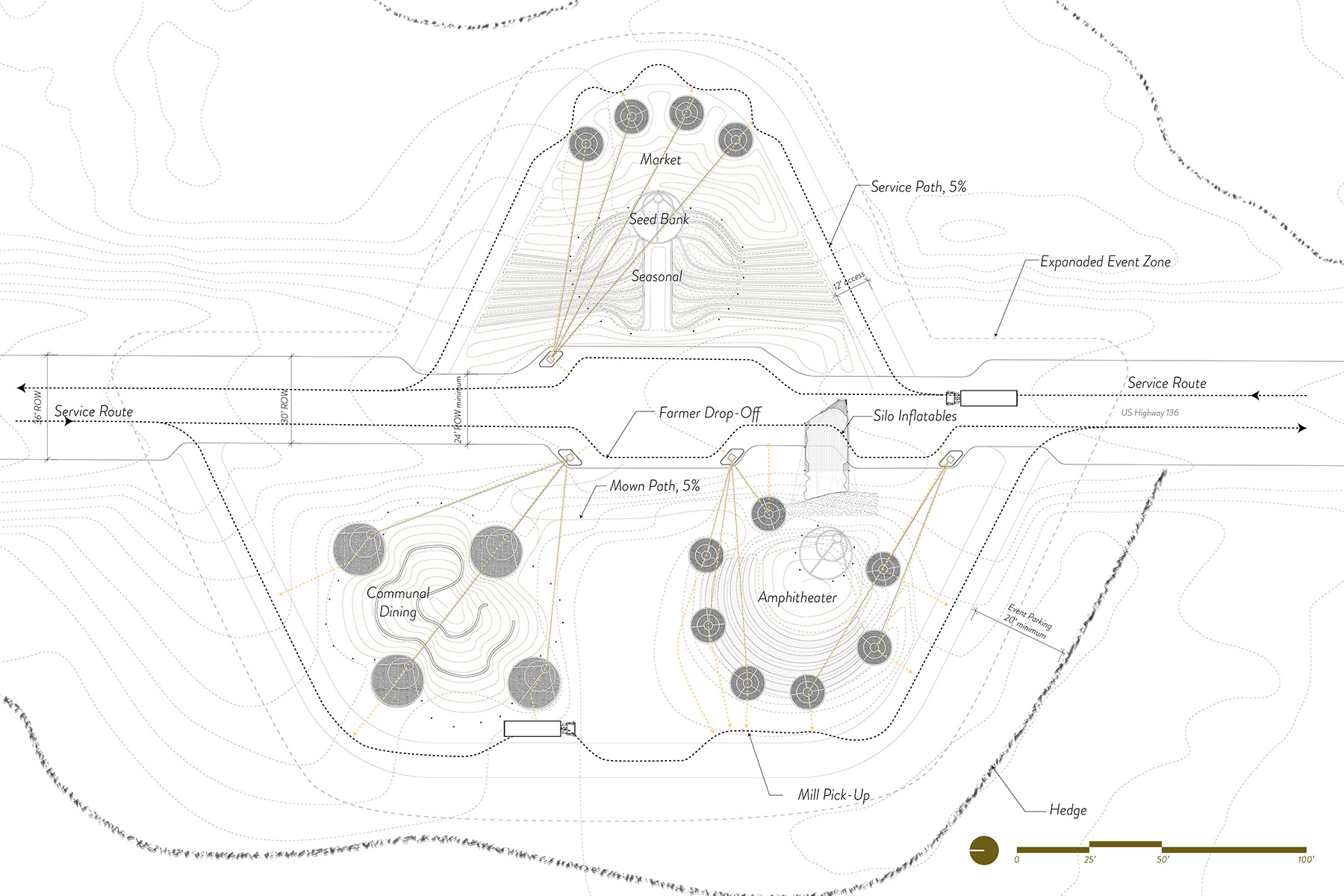

The Shared Silos are collective sites for grain storage and social life, spatializing the local economy. The playful verancular architecture reveals the seasonal color and yearly changes. Inflatables in the in-between spaces create year-round activation - green houses, markets, classes, and communal celebrations.
Course 4: Collapse & Regeneration
Collapse & Regeneration considers educational models for landscape architects in agriculture. Using the recourses designed previously, the school complicates ideas of property and ownership and becomes a site for knowledge sharing and saving.
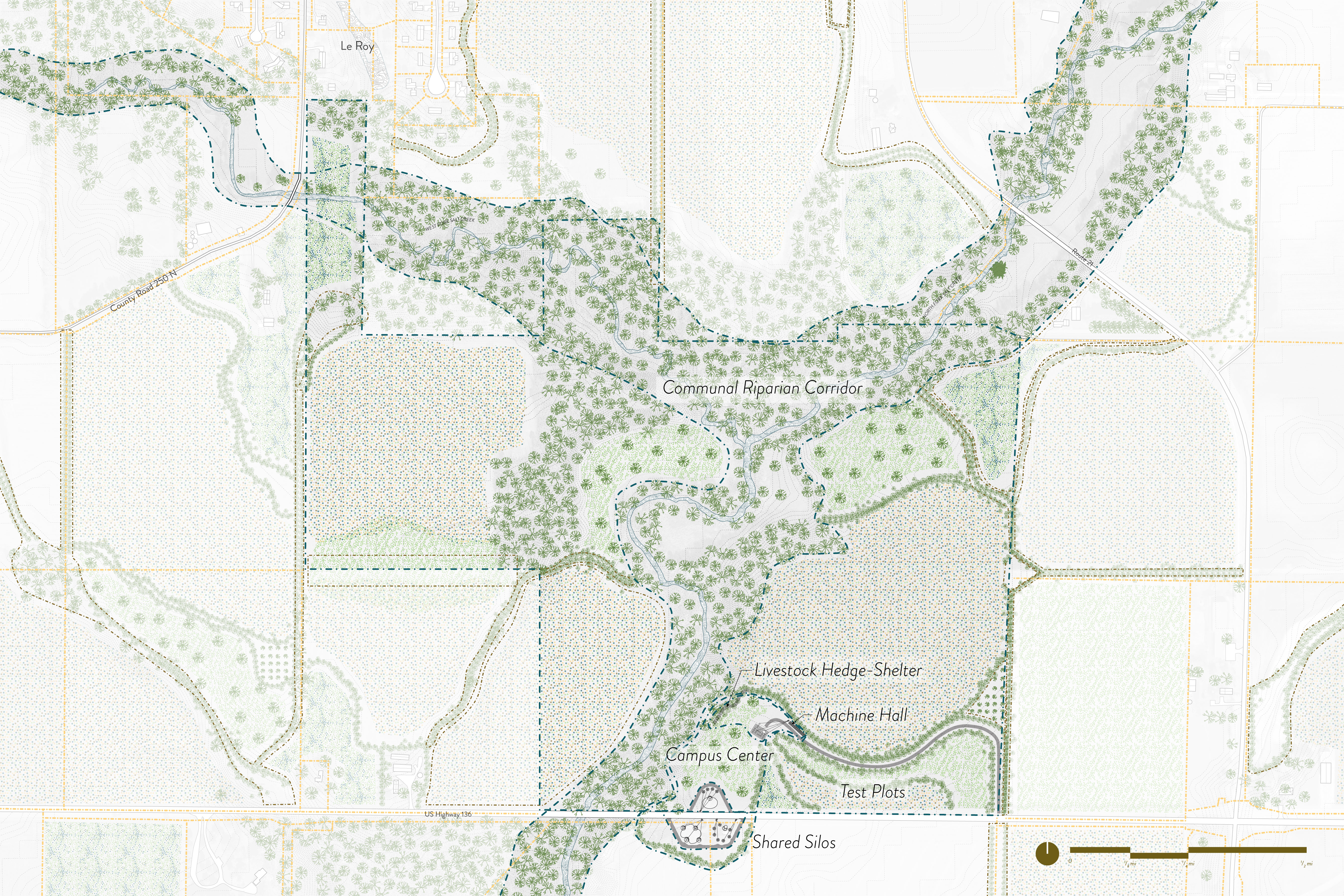
The New Land Grant Institution


Site Section | New Property Arrangements

An Eco-Ordinance, building up based on relations between plants, peoples, and culture
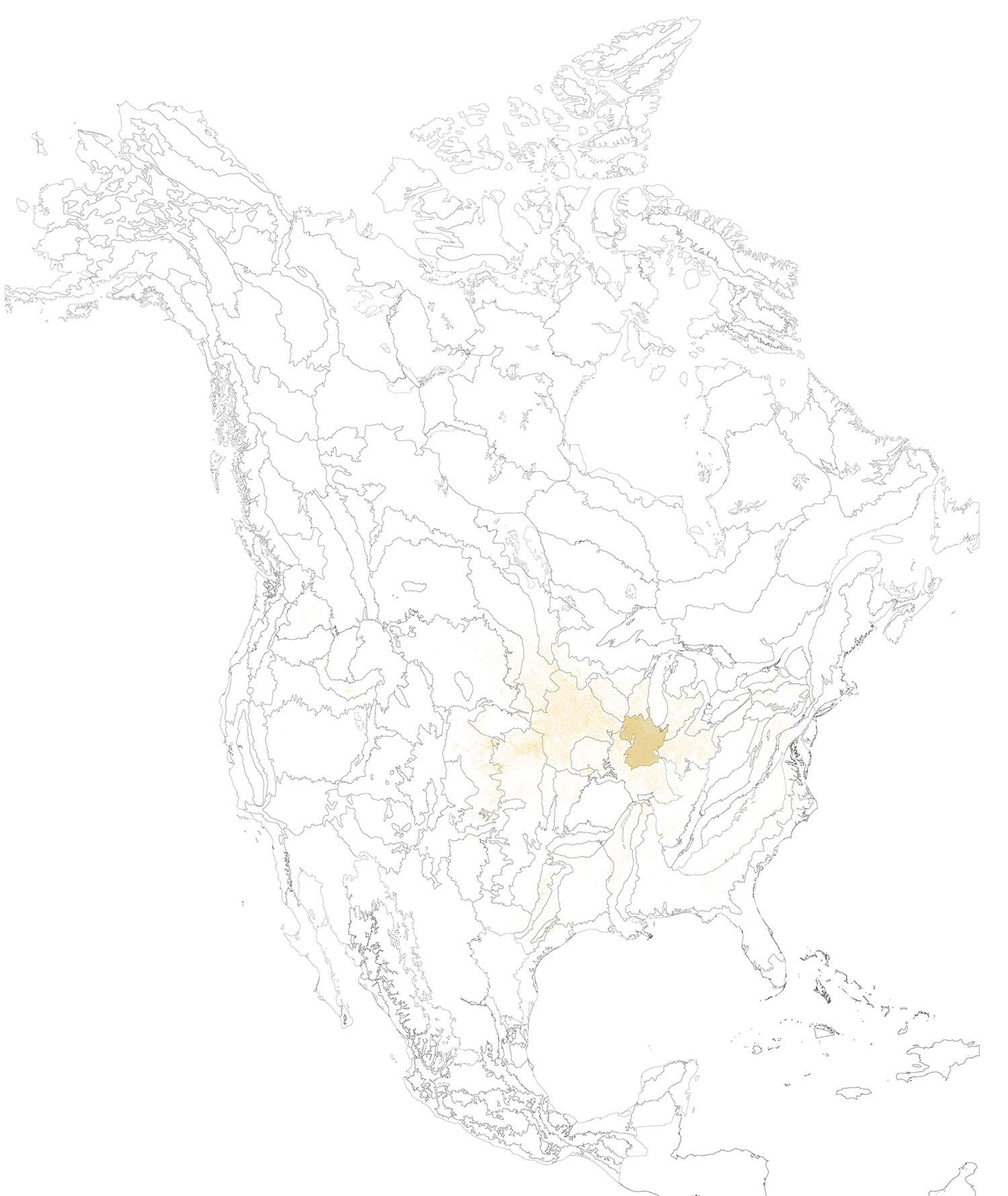 Remapping the Continent based on eco-regions
Remapping the Continent based on eco-regionsCourse 5: Eating in Communion
Eating in Communion is the site and the space to celebrate this new landscape. Cuisine & Empire becomes a shared meal, directly linking the farm and the table. As Anna Tsing notes, conceptualizing the world and making it real are intimately related. When we shared this meal, we brought Cuisine & Empire to life.
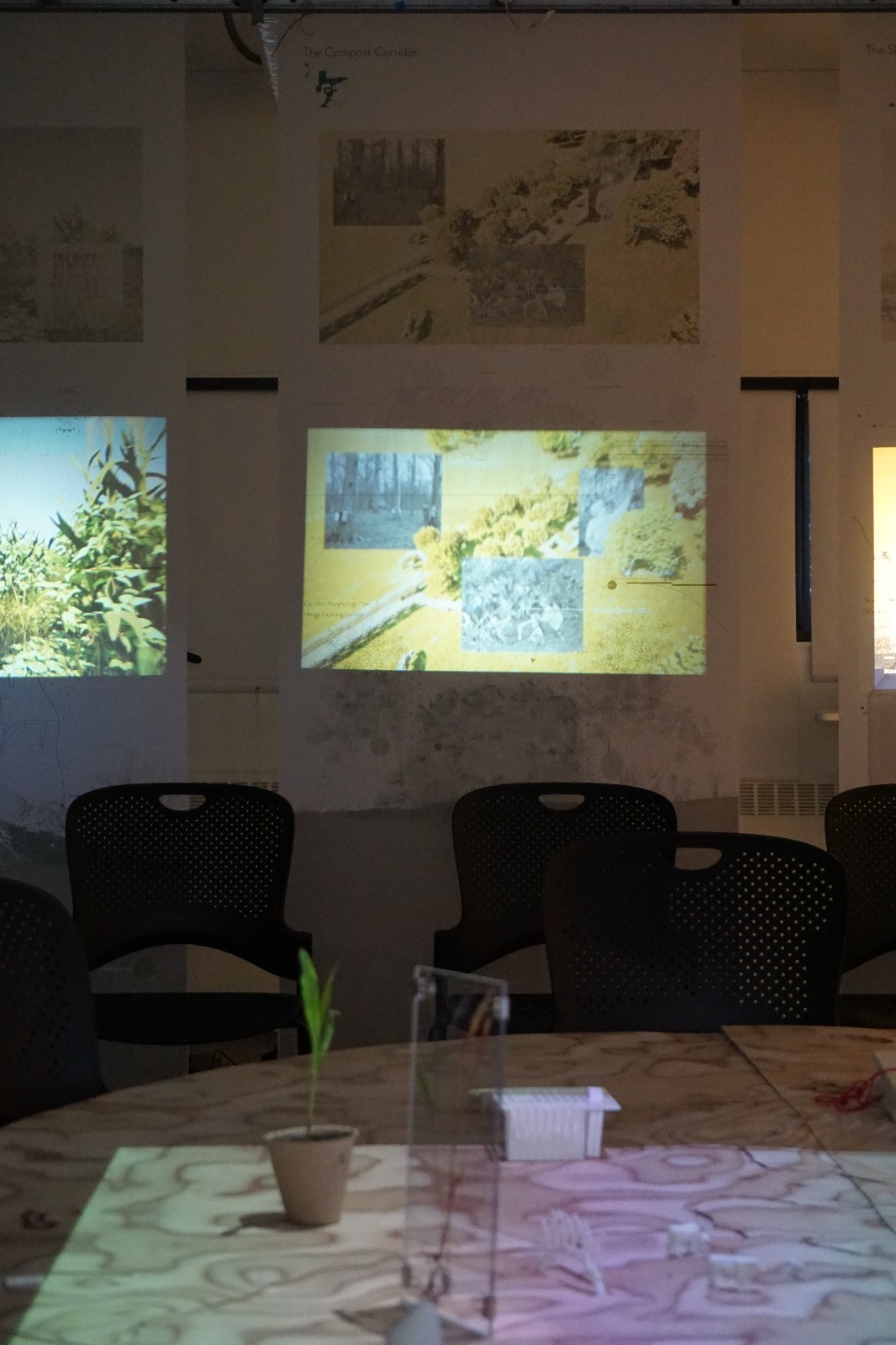
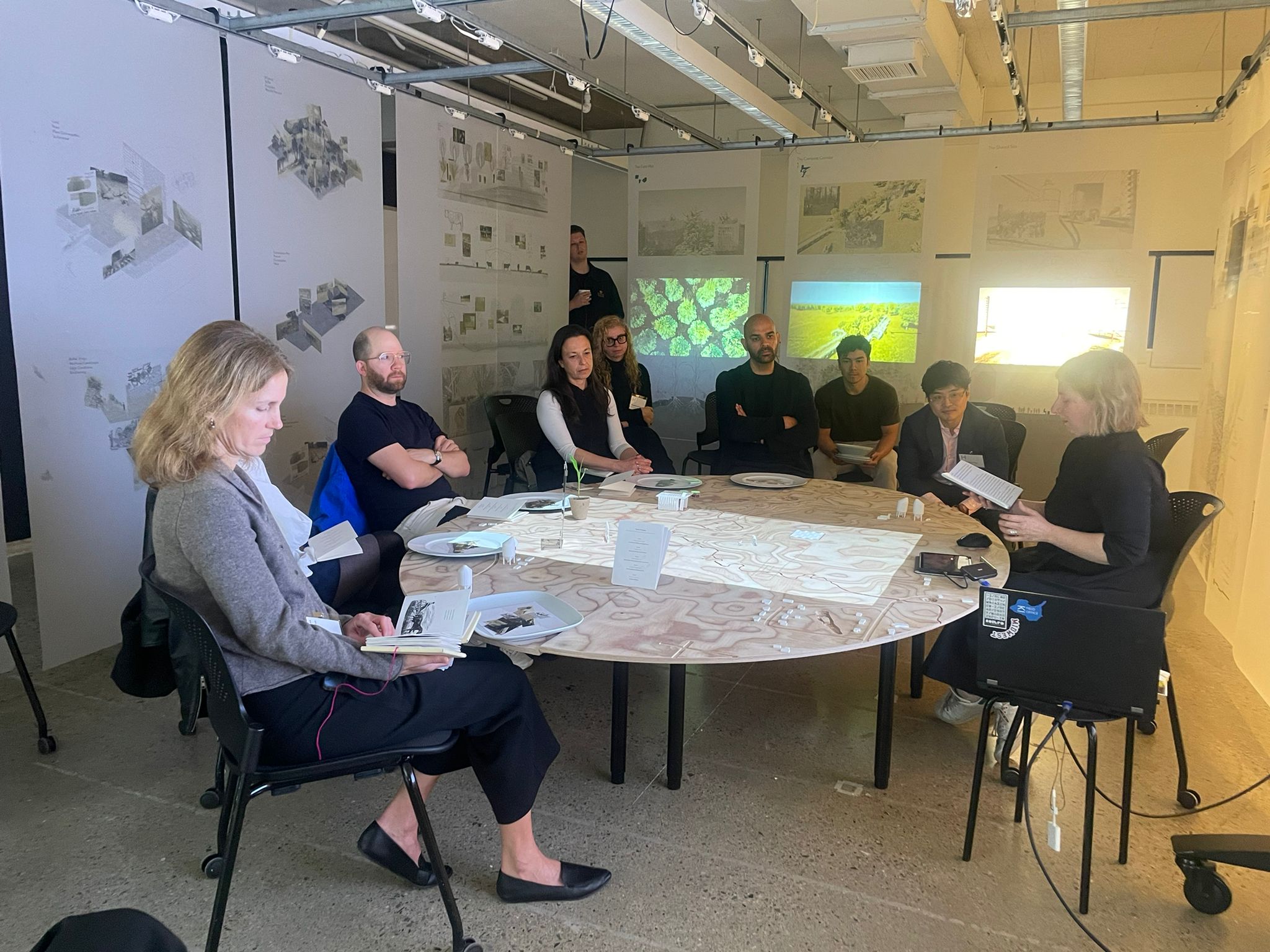


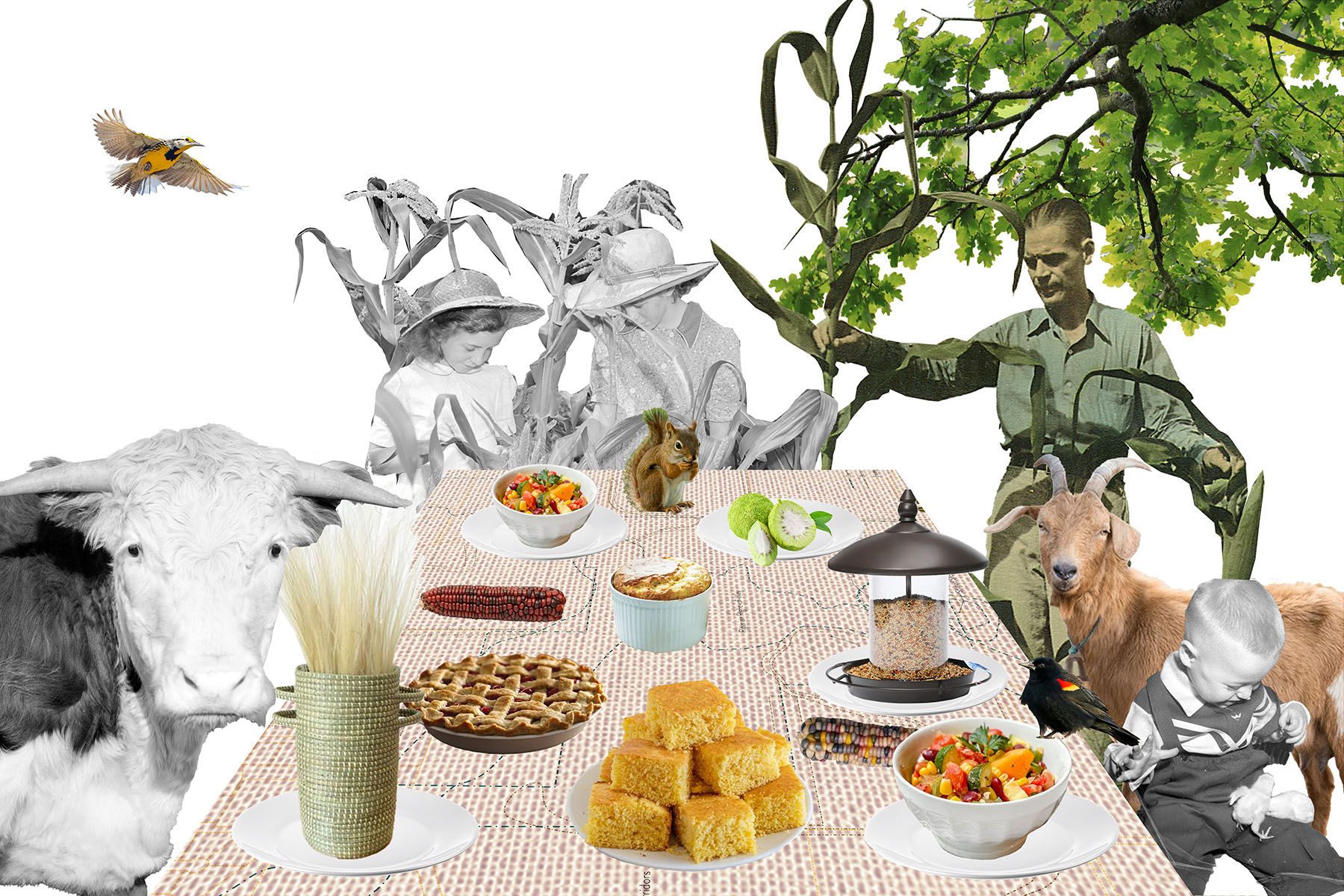
a pdf of the thesis can be found at Harvard’s repository here